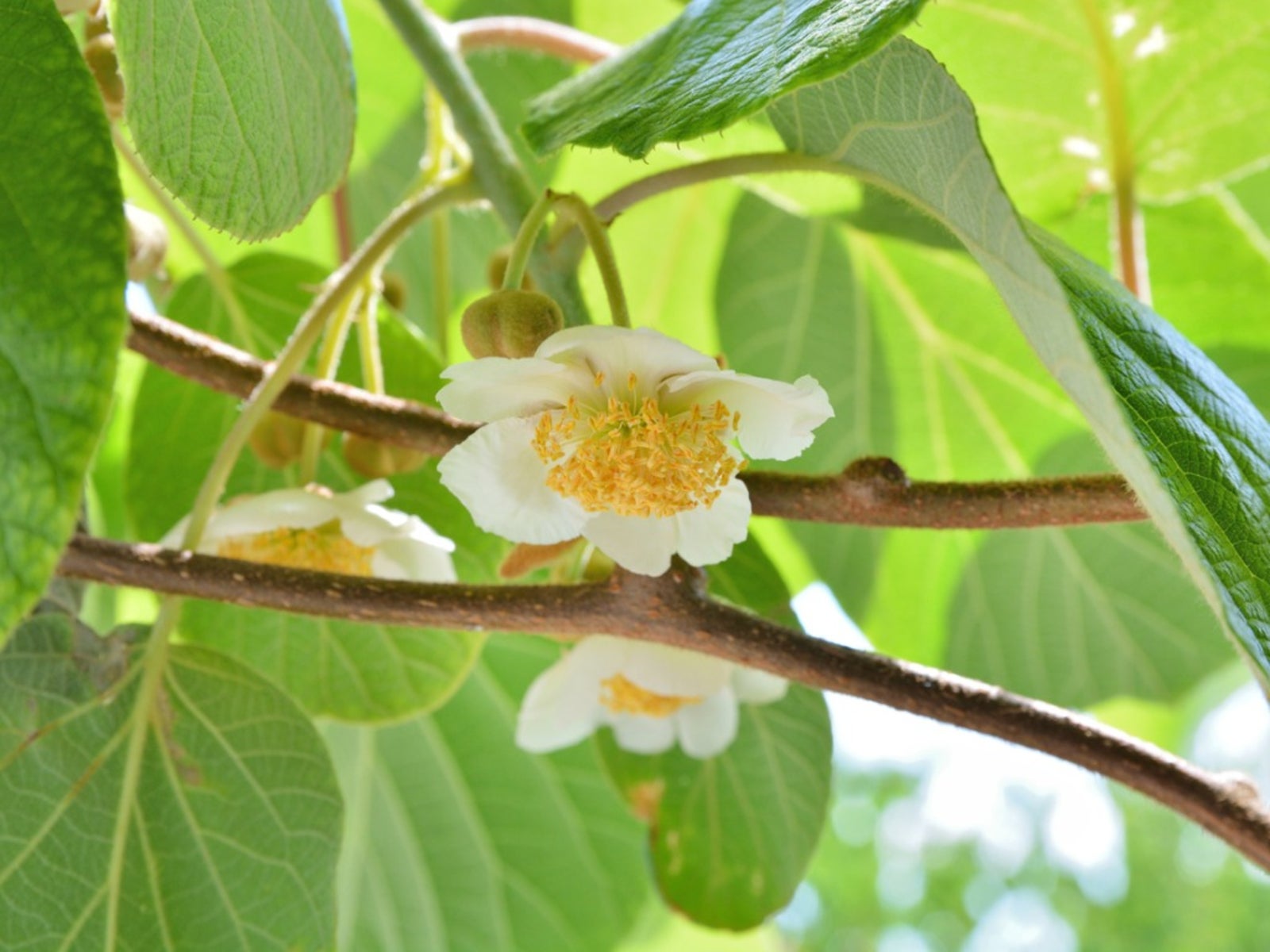Information About Pollinating Kiwi Plants


Kiwi fruit grows on large, deciduous vines that can live many years. Just like with the birds and the bees, kiwis require male and female plants to reproduce. Read on for more information on kiwi plant pollination.
Is a Kiwi Plant Self-Pollinating?
The simple answer is no. Although some vines bear both male and female flowers on the same plant, kiwis do not.
Each individual kiwi produces either pistillate or staminate flowers. Those producing pistillate blossoms are termed female plants and bear the fruit. It is recommended that you plant one male plant, with staminate flowers, for every eight female kiwi plants. This ensures good kiwi cross pollination and fruit set.
Importance of Kiwi Plant Pollination
For pollination, it is very important for the male and female vines to be planted close together. Their blossoms must also appear at the same time. The pollen of male blossoms is only viable for a few days after the flowers open. Female flowers can be pollinated for a week or more after they open.
Pollination is critical to kiwi fruit, as each should contain some 1,000 or more seeds. Poor pollination can leave deep valleys in the fruit where there are no seeds at all.
When Do Kiwis Flower?
Kiwis do not flower the year you plant them. In all likelihood, they won’t flower before the third growing season. Plants that were grown from juvenile plants will take even longer. Once your kiwi vines are old enough to flower, you can expect the blossoms to appear in late May.
Pollinating Kiwi Plants
You’ll have more work to do if you grow kiwi vines in a greenhouse, since bees are the best natural pollinators for kiwi flowers. If you count on wind pollinating kiwi plants, you are likely to be disappointed by the small fruit.
Sign up for the Gardening Know How newsletter today and receive a free copy of our e-book "How to Grow Delicious Tomatoes".
However, bees are not always practical for these fruit. Kiwi plants have no nectar to attract bees so they are not the bees’ preferred flower; you need three or four hives to pollinate an acre of kiwi. Also, bee populations have been weakened by the varroa bee mite.
For these reasons, some growers are turning to artificial means of pollination. Growers hand pollinate the kiwis by hand or use machines developed for the task.
The preferred male pollinator is the cultivar ‘Hayward.’ It is known for producing large fruit. The most popular female cultivars in California are ‘California' and 'Chico.' 'Matua' is another widely used cultivar.

Teo Spengler is a master gardener and a docent at the San Francisco Botanical Garden, where she hosts public tours. She has studied horticulture and written about nature, trees, plants, and gardening for more than two decades, following a career as an attorney and legal writer. Her extended family includes some 30 houseplants and hundreds of outdoor plants, including 250 trees, which are her main passion. Spengler currently splits her life between San Francisco and the French Basque Country, though she was raised in Alaska, giving her experience of gardening in a range of climates.